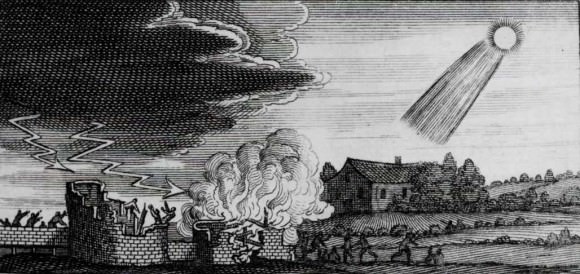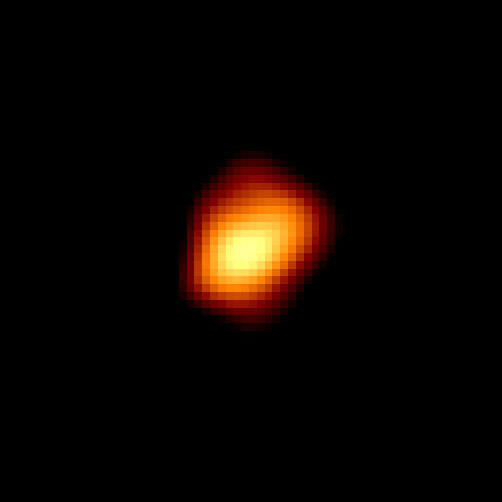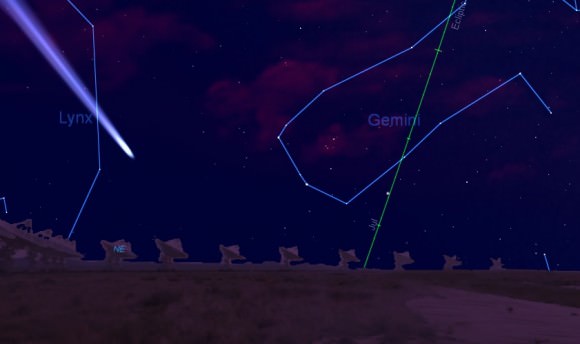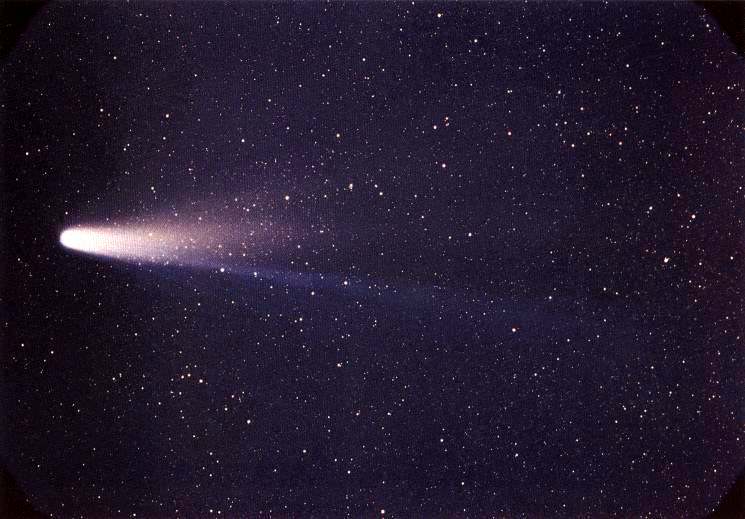An interesting and largely unknown tale of ancient astronomy recently came our way while reading author and astrophysicist Mario Livio’s blog. The story involves the passage of the most famous of all comets.
It’s fascinating to consider ancient knowledge of the skies. While our knowledge of ancient astronomy is often sparse, we know that cultures lived and perished by carefully monitoring the passage of the heavens. A heliacal rising of Sirius might coincide with the impending flooding of the life-giving waters of the Nile, or the tracking of the solstices and equinoxes might mark the start of the seasons.
To the ancients, comets were “hairy stars” which appeared unpredictably in the sky. We generally attribute the first realization that comets are periodic to Sir Edmond Halley, who successfully utilized Newton’s laws of gravity and Kepler’s laws of planetary motion to predict the return of Halley’s Comet in 1758. Such a prediction was a vindication of science.
But an interesting tale comes to us from the 1st century CE that Rabbi & Jewish Scholar Yehoshua Ben Hananiah may have known something of “a star that appears every 70 years.” The tale, as told in the Horayoth (rulings) of the Talmud and described in Mr. Livio’s blog is intriguing:
Rabbi Gamliel and Rabbi Yehoshua went together on a voyage at sea. Rabbi Gamliel carried a supply of bread. Rabbi Yehoshua carried a similar amount of bread and in addition a reserve of flour. At sea, they used up the entire supply of bread and had to utilize Rabbi Yehoshua’s flour reserve. Rabbi Gamliel then asked Rabbi Yehoshua: “Did you know that this trip would be longer than usual, when you decided to carry this flour reserve?” Rabbi Yehoshua answered: “There is a star that appears every 70 years and induces navigation errors. I thought it might appear and cause us to go astray.”
The Rabbi’s assertion is a fascinating one. There aren’t a whole lot of astronomical phenomena on 70 cycles that would have been noticeable to ancient astronomers. With an orbital period of 75.3 years, Halley’s Comet seems to fit the bill the best. The earliest confirmed description of Halley’s comes from Chinese astronomers during its 240 BCE passage. Later subsequent passages of the comet through the inner solar system were noted by the Babylonians in 164 & 87 BCE.
Of course, there’s no further evidence that ancient scholars identified those passages as the same comet. Some great comets such as Hale-Bopp seen in 1997 and this year’s anticipated Comet C/2012 S1 ISON are on orbits spanning thousands of years that outlast most Earthly civilizations.
Mr. Livio also notes that historical knowledge of ancient apparitions of Halley’s may have been accessible to the Great Knesset scholars during the Babylonian exile of the 6th century BCE.
One of the chief objections raised to the Halley hypothesis is the circumstances of the appearance of Halley’s Comet in the Rabbi’s lifetime. Remember, most folks didn’t live for 70 years in the 1st century. Any tales of a periodic comet would have been handed down by generations. You would be lucky to see Halley’s Comet once in your lifetime. Plus, not all apparitions of Halley’s Comet are favorable. For example, Halley’s was bright enough to induce “comet hysteria” with the public in 1910. In contrast, few northern hemisphere members of the general public got a good view of it during its 1986 passage.

Halley’s Comet was visible on and around January 25th, 66 CE during the Rabbi’s lifetime. However, the Rabbi would have been in his 20’s and have been a student (and not yet a Rabbi) himself. One can imagine that if he was fearful of a “false star” leading them astray, he must’ve known that the 70 year period was just about neigh.
The 66 CE apparition of Halley’s Comet would have appeared around the time of the Jewish Rebellion and just four years before the destruction of the Second Temple in Jerusalem by the Romans in 70 CE.
One other possible astronomical culprit has been cited over the years. The classic variable star Mira (Omicron Ceti) currently has a 332 day cycle which ranges from magnitude +3.5 to below naked eye visibility at +8.6 to +10.1. The variability of Mira was first discovered by astronomer David Fabricius on August 3rd 1596. There are suggestions that ancient Chinese and Babylonian astronomers may have known of this “vanishing star”.

Mira is expected to reach maximum for 2013 from July 21st to 31st.
Not all maxima for Mira are of equal brightness. Mira can peak anywhere from magnitude +2.0 to +4.9 (a 15-fold difference) and there’s evidence to suggest it may have been brighter in the past. Astronomer Philippe Veron noted in 1982 that a larger oscillation period of 60 years for the peak maxima of Mira falls just a decade short of Rabbi Yehoshua’s mention of an errant star.
Whatever the case, its fascinating to consider what celestial object might’ve been referred to, and how many other astronomical tales might be awaiting discovery in ancient texts. We’ve got lots of comets to ponder this year as Comet PanSTARRS, Lemmon, and ISON grace our skies in 2013. Halley’s will make its next visit to the inner solar system in 2061. I’ll open it up to you, the astute Universe Today reading public; was the Rabbi’s Star a comet, a variable star, a meteor storm, or none of the above?

-Dr. Mario Livio blogs at A Curious Mind. Be sure to check out his new book Brilliant Blunders: From Darwin to Einstein – Colossal Mistakes by Great Scientists That Changed Our Understanding of Life in the Universe out on May 14th!

